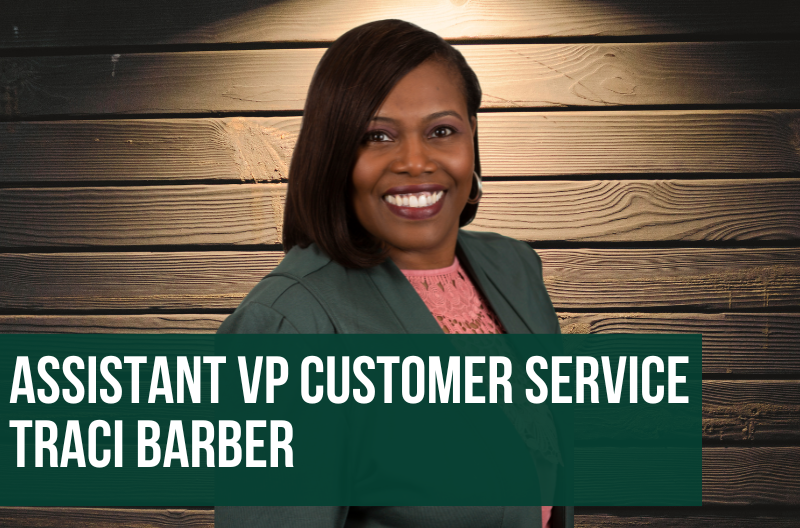We’re very excited to unveil our latest video from our new blog series titled “Insights from the Top: 3 Questions with PLM Leaders.” Every month, we’ll feature a different member of our leadership team, offering their perspectives on industry trends and the crucial role PLM plays in addressing the needs of the wood niche.
In this month’s edition, we are joined by Traci Barber, Assistant Vice President of Customer Service.
Q. Insights from the Top: How do you see customer service changing as technology evolves?
A. Traci Barber: I observe a shift in customer service driven by modern technology, transitioning towards self-service options that empower customers to manage standard procedures and inquiries independently. This evolution entails offering platforms where customers can handle tasks traditionally routed through customer service representatives (CSRs) or brokers. For instance, while most carriers currently allow online claim reporting, future advancements may enable customers to swiftly process small first-party claims autonomously. In such scenarios, customers could initiate a claim, receive a claim number, verify policy details, determine deductible applicability, and even upload repair invoices directly. These streamlined processes could result in claims being resolved within 48 to 72 hours, enhancing efficiency, and placing control firmly in the hands of insured individuals.
This technological evolution aims to leverage automation to expedite processes, providing faster and more convenient services to clients. While these advancements may reduce reliance on intermediaries like brokers and CSRs for certain tasks, it’s important to note that personalized assistance will remain essential for many clients. Despite the increasing prevalence of self-service options, there will always be individuals who prefer direct human interaction. Thus, while technology continues to reshape customer service in the insurance industry, the role of CSRs remains invaluable, serving as trusted advisors and providing personalized support to clients when needed.
Q. Insights from the Top: How does eliminating the middleman impact the relationship between PLM and the broker? The PLM triangle.
A. Traci Barber: I foresee a transformation in the role of customer service representatives (CSRs) as we embrace self-service options to enhance customer experience. Currently, CSRs excel in product knowledge and promptly addressing inquiries such as bill status or claim updates. However, as we introduce self-service functionalities, CSRs are poised to transition into more of a training and technical support role. They will serve as guides, assisting customers in navigating these new platforms and resolving any technical issues that may arise. In seeking talent for these evolving positions, tech-savviness becomes a crucial criterion alongside insurance expertise. CSRs will need to not only possess a deep understanding of insurance products but also demonstrate proficiency in guiding customers through self-service processes. Their ability to troubleshoot technical challenges and provide hands-on assistance will be paramount in ensuring a seamless transition to self-service options for our clients. As technology continues to evolve, empowering customers with greater control over their interactions, CSRs will play a pivotal role in facilitating this transition and delivering exceptional service.
Q. Insights from the Top: IT for the customer?
A. Traci Barber: Indeed, the primary objective is to enhance customer assistance and training, a task we currently undertake with certain online applications tailored for self-service. This end-to-end support extends from the customer to the broker, ensuring seamless navigation of our digital platforms. Looking ahead, leveraging technology to provide personalized guidance becomes paramount. Implementing features like screen sharing during support calls allows us to demonstrate procedures in real-time, empowering customers to utilize self-service options effectively. This approach not only serves the immediate needs of customers but also aligns with the broader trend of integrating technology into customer service operations.
The prevailing trend in customer service evolution revolves around technology adoption. Within our team discussions, we’ve explored the potential of chatbots, live chat assistants, and text-based communication channels. However, the efficacy of these advanced solutions hinges on understanding our clientele’s preferences and feedback regarding technology usage. While chatbots and automated systems offer efficiency gains, they may not always meet customer expectations, necessitating human intervention. Therefore, as we contemplate integrating such technologies, we must be prepared to address their limitations and provide alternative support mechanisms to ensure a positive customer experience.
Furthermore, as technology reshapes customer service dynamics, the role of the traditional customer service representative (CSR) is poised for transformation. While some routine tasks may become automated, opportunities emerge for CSRs to evolve into specialized roles, such as claims assistance. By offering self-service options for routine inquiries like policy updates or ID card requests, CSRs can allocate more time and expertise to handling complex claims-related queries. This shift not only optimizes resource utilization but also elevates the level of support provided to customers, aligning with our commitment to delivering exceptional service across all touchpoints.

